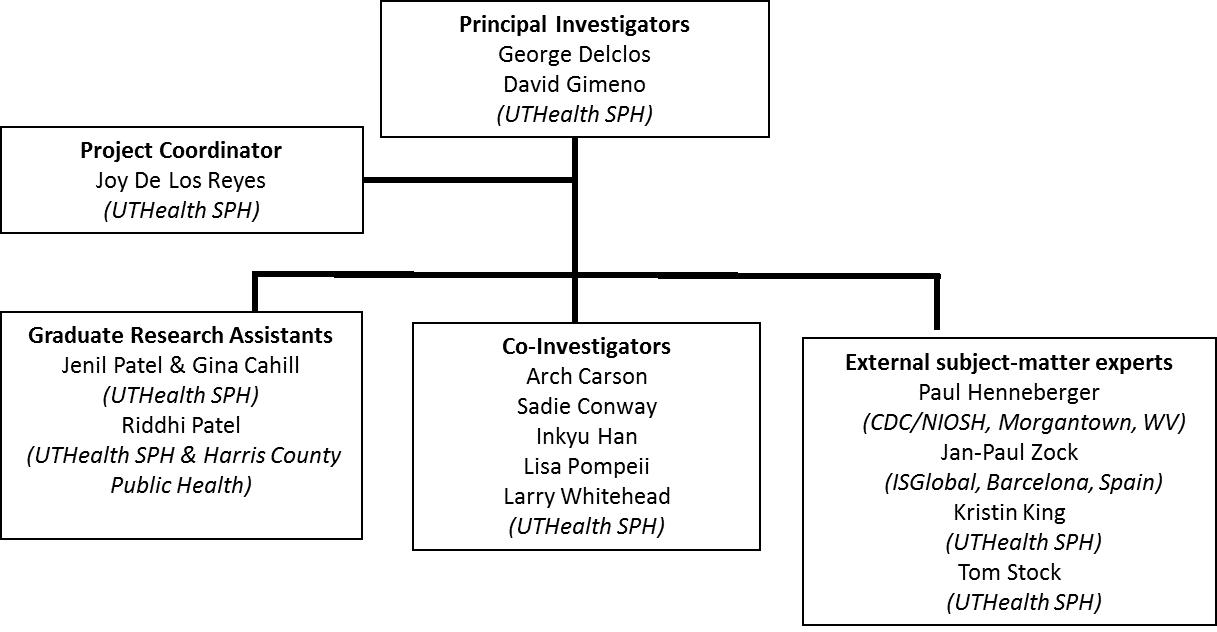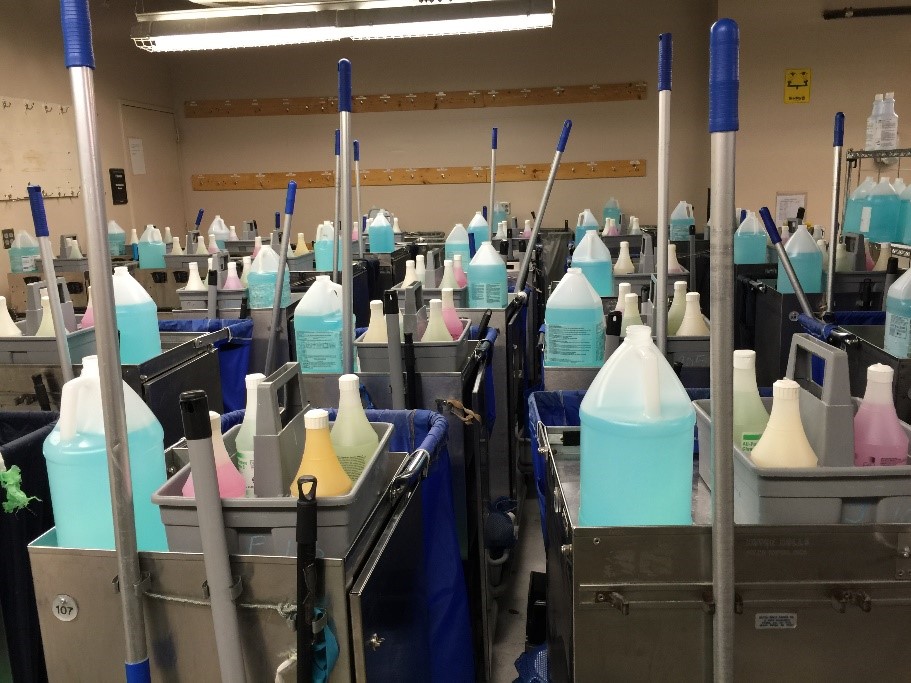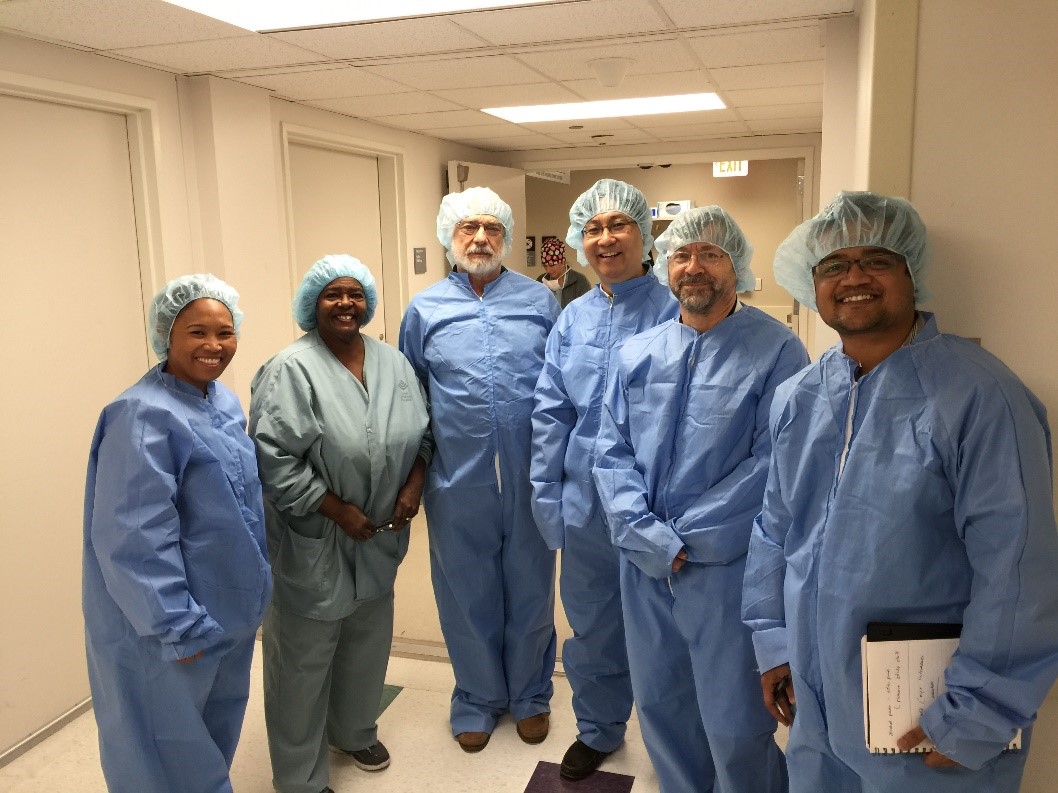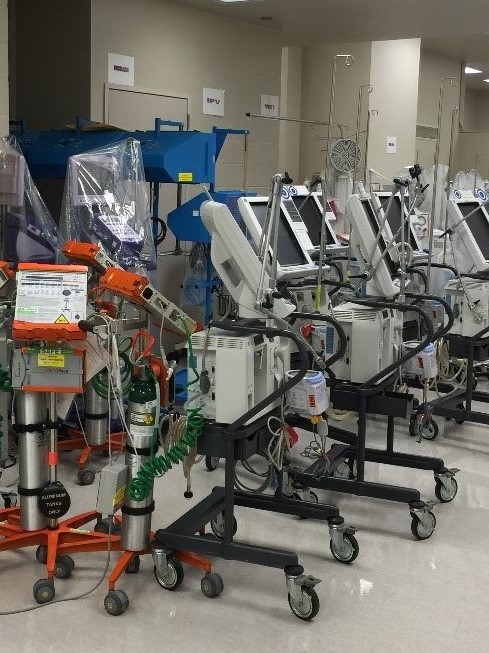Asthma in Texas Healthcare Workers II
-
Project Overview
Study Team and Organization
The prevalence of occupational asthma is increasing in the United States. Certain occupational groups are affected more than others; among these are those working in healthcare industry. In 2003, the principal investigators of this study, Drs. George Delclos and David Gimeno, conducted a study, results of which indicated an increased prevalence of work-related asthma (WRA) in Texas healthcare workers (HCWs). They also found that certain cleaning agents in healthcare settings, especially those used to disinfect medical instruments and clean building surfaces, were associated with significantly increased asthma risk in selected HCW groups, especially nurses.
In the years since this study was conducted, cleaning and disinfectant practices have changed. For example, some manual processes are now automated, and newer cleaning agents, such as green cleaners, or methods, such as non-chemical cleaning, are increasingly used. Drs. Delclos and Gimeno, housed in the UT Southwest Center for Occupational and Environmental Health (SWCOEH) at UTHealth School of Public Health, are again leading a new project to determine whether asthma patterns in HCWs and their associated risk factors have changed. The project is being conducted with support from a 4-year R01 grant and a longstanding training grant, the Texas Education and Research Center, both funded by the National Institute for Occupational Safety and Health (NIOSH).
The main goal of the study is to assess whether recent changes in healthcare practices and exposures have affected the prevalence and impact of WRA among HCWs in Texas. Important differences between the 2003 and 2014 studies include: 1) more detailed examination of exposures and in a broader spectrum of healthcare practice settings, 2) study of certain nursing subgroups, such as nursing aides, and 3) measurement of the impact of WRA on quality of life and functioning at work. The specific study aims are to: 1) estimate the current prevalence of asthma risk factors and WRA in healthcare settings; 2) measure associations between occupational exposures and WRA; and 3) measure various indicators of socioeconomic impact of asthma in healthcare workers, comparing them among persons with WRA, non-work-related asthma and non-asthmatics. Results will be compared to those obtained in the 2003 study, where applicable.
Assessment of workplace exposures will be based on an updated version of an asthma risk factor-specific job-exposure matrix (JEM). The development and coding of this JEM has taken over two years, using input gathered from several workplace walk-throughs and a diverse expert panel of occupational health professionals, together with a two-level coding process, completed in June 2017. Information on asthma outcomes and asthma covariables was collected via a statewide survey of nurses, physicians, respiratory therapists and occupational/physical therapists, offered both by mail and online, and distributed using a combination of repeated contact waves and incentives. As of this writing, all data have been collected and are in the process of cleaning, merging of datasets, and preparation for final analyses.
The study is currently ending the third year, with final results and derivations expected by July 2018.
Photos Resources Contact Information
Resources Contact Information



Jenil Patel, MPH
Graduate Research Assistant
UTHealth School of Public Health
Email: [email protected]Joy De Los Reyes, MPH
Research Coordinator
UTHealth School of Public Health
Email: [email protected]
Phone: 713-500-9585
